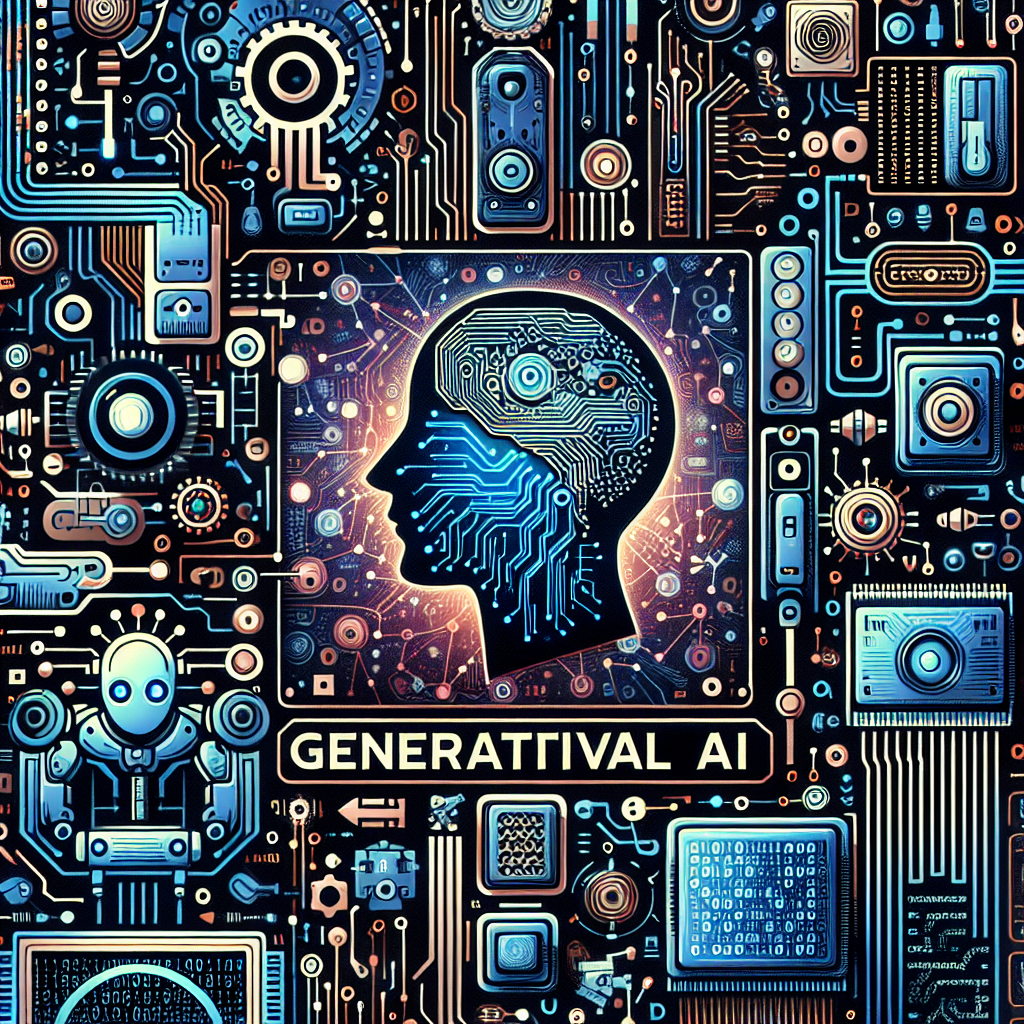Generative AI: Revolutionizing the Way We Interact with Technology
Artificial Intelligence (AI) has been making waves in the technology industry for years, but one of the most recent and exciting developments is generative AI. Generative AI refers to the use of machine learning algorithms to generate new content, such as images, text, and even music, that is indistinguishable from human-created content. This technology has the potential to revolutionize the way we interact with technology, opening up a whole new world of possibilities for creativity, personalization, and innovation.
Generative AI works by training neural networks on large datasets of existing content, such as images or text, and then using this training to generate new content that is similar in style and structure to the original data. This process is known as deep learning, and it allows machines to learn how to create new content by analyzing patterns and trends in the data.
One of the most well-known applications of generative AI is in the field of image generation. Generative adversarial networks (GANs) are a type of generative AI algorithm that consists of two neural networks – a generator and a discriminator – that work together to create realistic images. The generator creates new images based on random noise input, while the discriminator evaluates these images and provides feedback to the generator on how to improve its output. Through this process of feedback and iteration, GANs can generate highly realistic images that are difficult to distinguish from those created by humans.
Generative AI is also being used in the field of natural language processing (NLP) to generate text, such as articles, stories, and even code. OpenAI’s GPT-3 (Generative Pre-trained Transformer 3) is one of the most advanced generative AI models for text generation, capable of producing human-like responses to a wide range of prompts. GPT-3 has been used in applications such as chatbots, content generation, and even creative writing, demonstrating the potential of generative AI to revolutionize the way we interact with technology.
The impact of generative AI on technology and society is vast and far-reaching. Here are some of the key ways in which generative AI is revolutionizing the way we interact with technology:
1. Personalization: Generative AI enables personalized content creation on a massive scale. For example, companies can use generative AI to create personalized product recommendations, marketing materials, and user interfaces tailored to each individual user’s preferences and behaviors.
2. Creativity: Generative AI opens up new possibilities for creative expression, allowing artists, designers, and writers to explore new ideas and styles. By harnessing the power of generative AI, creators can generate new content quickly and efficiently, freeing up time for experimentation and innovation.
3. Automation: Generative AI can automate repetitive tasks, such as content generation, image editing, and data analysis, freeing up human workers to focus on more complex and creative tasks. This automation can lead to increased productivity, efficiency, and cost savings for businesses.
4. Innovation: Generative AI is driving innovation in a wide range of industries, from entertainment and marketing to healthcare and finance. By using generative AI to generate new ideas, products, and services, companies can stay ahead of the competition and meet the evolving needs of their customers.
5. Accessibility: Generative AI has the potential to democratize access to creative tools and resources, making it easier for individuals and businesses of all sizes to create high-quality content. By lowering the barriers to entry, generative AI can empower a new generation of creators and innovators.
Despite its many benefits, generative AI also raises ethical and social concerns. For example, there are concerns about the potential misuse of generative AI for creating fake news, deepfakes, and other forms of disinformation. Additionally, there are concerns about the impact of generative AI on jobs and the economy, as automation could lead to job displacement and income inequality. It is important for policymakers, researchers, and industry leaders to address these concerns and develop guidelines and regulations to ensure the responsible use of generative AI.
FAQs
Q: What are some common applications of generative AI?
A: Some common applications of generative AI include image generation, text generation, music composition, and video generation. Generative AI is also used in fields such as design, art, and entertainment to create new and innovative content.
Q: How does generative AI work?
A: Generative AI works by training neural networks on large datasets of existing content and using this training to generate new content that is similar in style and structure to the original data. This process involves deep learning, where machines learn how to create new content by analyzing patterns and trends in the data.
Q: What are some benefits of generative AI?
A: Some benefits of generative AI include personalization, creativity, automation, innovation, and accessibility. Generative AI enables personalized content creation, fosters creative expression, automates repetitive tasks, drives innovation, and democratizes access to creative tools and resources.
Q: What are some ethical concerns surrounding generative AI?
A: Some ethical concerns surrounding generative AI include the potential misuse of the technology for creating fake news, deepfakes, and other forms of disinformation. There are also concerns about the impact of generative AI on jobs and the economy, as automation could lead to job displacement and income inequality.
Q: How can generative AI be used responsibly?
A: Generative AI can be used responsibly by developing guidelines and regulations to ensure the responsible use of the technology. It is important for policymakers, researchers, and industry leaders to address ethical and social concerns surrounding generative AI and to promote transparency, accountability, and fairness in its use.

